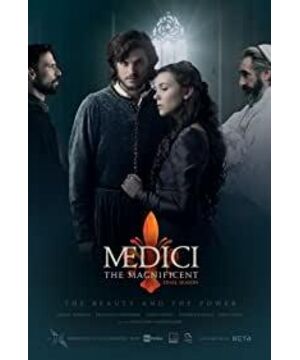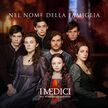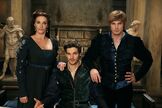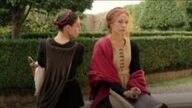The heart of the Italian Renaissance is Florence, and most of the most well-known artists are inextricably linked to the city.
When we stroll through the World Art Museum to appreciate the "Italian Renaissance", when our eyes pass over Masaccio, Donatello, Botticelli, Leonardo da Vinci, Raphael, De La Ria, Michelangelo Kiro, Titian, Mantania, and so on, you should probably understand that there is another name that shines behind these Renaissance masters, and that is Medici. In fact, many of the works in the exhibition were originally collected by the Medici family, and many portraits and sculptures were made for members of this family. Even the main source of the exhibits is the Uffizi Gallery in Florence, which is also the heritage of this family. .
The family's Salvetro Medici, the first Medici member to be recorded in history, was the standard-bearer on duty when the carders' uprising that shook Florence in 1378 broke out (Florence Supreme Justice of the Republic).
Family founder Giovanni Dibicchi de' Medici
Family founder Giovanni Dibicchi de' Medici
In 1378 Salvestero was elected president of the Municipal Council of Florence, but in 1381 He was expelled from Florence after the fall of the elected government.
Giovanni Medici revived the Medici family, made huge profits from his bank, and became the richest man in Florence. His eldest son Cosimo Medici took over the Pope's finances on behalf of the Medici Bank.
In 1433, after losing the war against Lucca, Cosimo was sentenced to 10 years in exile, but was recalled the following year by a new council of elders, who, relying on popular support, expelled the Albizi family.
In 1434, Cosimo established a tyranny in Florence and became the uncrowned lord of Florence.
In 1469, after the death of Pierrot I (son of Cosimo), Lorenzo, grandson of Cosimo, succeeded the tyrant of Florence.
In 1478 Pope Sixtus instructed opponents to attack Lorenzo and his brother Giuliano during Easter Mass in the cathedral. Giuliano was stabbed to death, and Lorenzo was injured and escaped into the church. At this critical juncture, Lorenzo has the support of the people. The people wiped out the opponents in the city, and several of the organizers of the attack who escaped from Florence were also captured one after another. So far, Lorenzo thwarted the Pope's conspiracy and forced King Ferdinand I of Naples to submit, maintaining the status of Florence. After that, Lorenzo established his own imperial institution, the Council of Seventy, to replace the old Hundred. make the government truly stable.
In 1494, the French invaded Florence, and Pierrot, who succeeded Lorenzo, was expelled.
In 1512, Pierrot's son Lorenzo, with the support of the Spanish army, resumed his rule in Florence.
The family was expelled again in 1527, but returned to Florence three years later under the protection of the Holy Roman Empire.
Florence became a duchy in 1532.
In 1567, Cosimo of the family was awarded the title of Grand Duke, and two years later he established the Grand Duchy of Tuscany, called Cosimo I. Florence became the capital of the duchy, and the republic existed in name only.
Medici rule in Florence continued until 1737, after which Francis of Lorraine ruled.
Members introduce
Salvestro de' Medici (1331–1388), who suppressed the carders' revolt, became Florence's standard-bearer of justice, expelled in 1382
Giovanni de' Medici (1360 – 1429), restored the family fortune and made the Medici family the wealthiest in Europe
Cosimo de’ Medici (1389 – 1464), the first Florentine tyrant, leader of the Medici political dynasty Founder
Lorenzo I de' Medici (1449–1492), who led Florence
Giovanni de' Medici (1475–1523) during the Golden Age of the Renaissance, namely Pope Leo X
Giulio de' Medici (1478–1534), Pope Clement VII
Cosimo I de' Medici (1519–1574), 1st generation of Tuscany Grand Duke, revival of the Medici family
Catherine de' Medici (1519–1589), wife of Henry II of France,
Alessandro , mother of Francis II, Charles IX and Henry III of France Ottaviano de' Medici (1535–1605), third Tosca of Pope Leo XI,
Ferdinand I de' Medici (1549–1609)
Ferdinand II de' Medici (1610–1670), 5th Archduke of Tuscany Cosimo
III de' Medici (1670–1723), 6th Archduke of Tuscany
Gian Gastone de' Medici, Grand Duke of Cana (1723–1737) The last Grand Duke of Tuscany of the Medici family, died on July 9, 1737.
Marie de' Medici (1573–1642), Queen and Regent of France, wife of Henry IV, mother of Louis XIII
View more about Medici reviews











